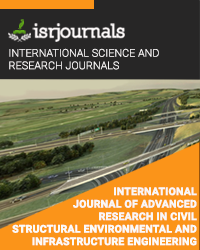migration of contaminant through a soil due to an instantaneous source
A M Hulagabali,G R Dodagoudar,C H Solanki
Published in International Journal of Advanced Research in Civil,Structural,Environmental and Infrastructure Engineering and Developing
ISSN: 2320-723X Impact Factor:1.7 Volume:1 Issue:3 Year: 08 April,2014 Pages:67-73

Abstract
Analytical and numerical simulation models help Civil and Geotechnical engineering to understand the physical and chemical processes that influence contaminant transport through a saturated soil layer, including advective and dispersive transport as well as sorption. The basic principles for simulation of contaminant migration through a saturated soil were introduced. Using the spreadsheet program MS Excel, based on existing analytical solution for two-dimensional transport of contaminants in a saturated soil layer, concentrations at several coordinates at several times were calculated. A MATLAB code was developed using finite difference approach for numerical solution. The programming steps followed for analytical and numerical solutions were explained. The analytical and numerical solution was compared. An example of the simulation models for the contaminant transport through a saturated soil layer is given. The study shows that the analytical solution and the numerical solution, for the given problem, match in an acceptable range.
Kewords
advection; contaminant migration; dispersion; soil; sorption.
Reference
[1] Fityus, S. G., Smith, D. W., and Booker, J. R. (1999). “Contaminant transport through an unsaturated soil liner beneath a landfill.” Can. Geotech. J., 36, 330-354. [2] Quigley, R. M., Fernandez, F., Yanful, E., Helgason, T., Margaritis, A., and Whitby, J. L.(1987). “Hydraulic conductivity of contaminated natural clay directly beneath a domestic landfill.” Can. Geotech. J., 24, 377-383. [3] Bear, J., Alexander H, Cheng D (2010). Modelling Ground water flow and contaminant transport, Springer [4] Domenico, P. A., and Robbins, G. A. (1985). “A new method of contaminant plume analysis.” Ground Water, 23, 476-485. [5] P. B. Bedient, H. S. Rifai, and C. J. Newell, Ground water contamination transport and remediation, Prentice Hall, Englewoods Cliffs, NJ, 1994. [6] R. K. Rowe and J. R. Booker, 1-D pollutant migration in soils of finite depth, J Geotech Eng (ASCE) 111 (1985), 479_499. [7] C. D. Shackelford, Contaminant transport, In: D. E. Daniel (Ed.), Geotechnical practice for waste disposal, Chapman-Hall, London, 1993.

